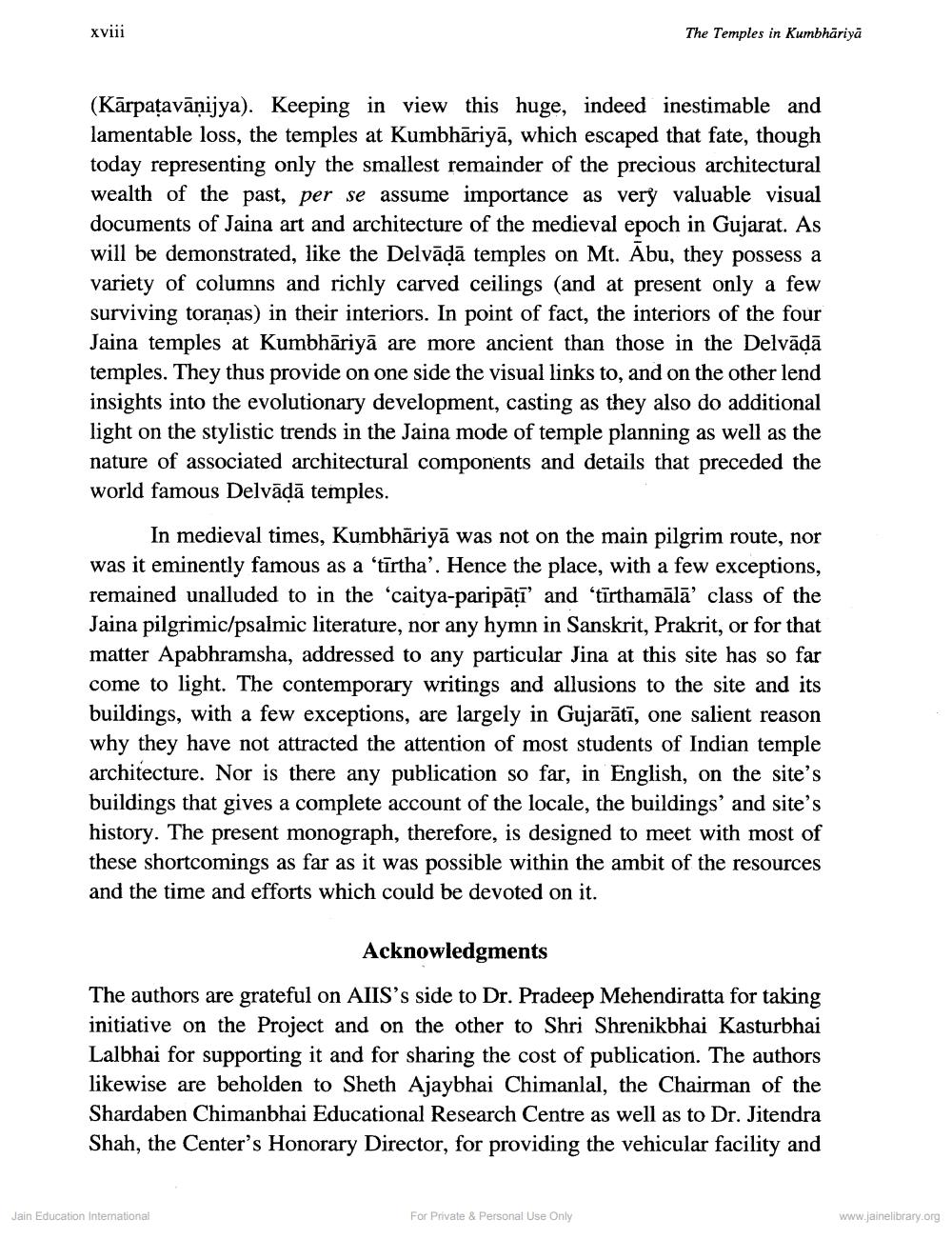________________
xviii
(Kārpaṭavānijya). Keeping in view this huge, indeed inestimable and lamentable loss, the temples at Kumbhāriyā, which escaped that fate, though today representing only the smallest remainder of the precious architectural wealth of the past, per se assume importance as very valuable visual documents of Jaina art and architecture of the medieval epoch in Gujarat. As will be demonstrated, like the Delväḍā temples on Mt. Abu, they possess a variety of columns and richly carved ceilings (and at present only a few surviving toranas) in their interiors. In point of fact, the interiors of the four Jaina temples at Kumbhariya are more ancient than those in the Delvāḍā temples. They thus provide on one side the visual links to, and on the other lend insights into the evolutionary development, casting as they also do additional light on the stylistic trends in the Jaina mode of temple planning as well as the nature of associated architectural components and details that preceded the world famous Delvāḍā temples.
The Temples in Kumbhāriyā
In medieval times, Kumbhāriya was not on the main pilgrim route, nor was it eminently famous as a 'tīrtha'. Hence the place, with a few exceptions, remained unalluded to in the 'caitya-paripatī' and 'tīrthamālā' class of the Jaina pilgrimic/psalmic literature, nor any hymn in Sanskrit, Prakrit, or for that matter Apabhramsha, addressed to any particular Jina at this site has so far come to light. The contemporary writings and allusions to the site and its buildings, with a few exceptions, are largely in Gujarātī, one salient reason why they have not attracted the attention of most students of Indian temple architecture. Nor is there any publication so far, in English, on the site's buildings that gives a complete account of the locale, the buildings' and site's history. The present monograph, therefore, is designed to meet with most of these shortcomings as far as it was possible within the ambit of the resources and the time and efforts which could be devoted on it.
Acknowledgments
The authors are grateful on AIIS's side to Dr. Pradeep Mehendiratta for taking initiative on the Project and on the other to Shri Shrenikbhai Kasturbhai Lalbhai for supporting it and for sharing the cost of publication. The authors likewise are beholden to Sheth Ajaybhai Chimanlal, the Chairman of the Shardaben Chimanbhai Educational Research Centre as well as to Dr. Jitendra Shah, the Center's Honorary Director, for providing the vehicular facility and
Jain Education International
For Private Personal Use Only
www.jainelibrary.org




